Eventos economicos
Viernes
CPI precio de los consumidores
Indice manufacturero en NY
Flujo de Capital Internacional
Produccion Industrial
Sentimientodel consumidor
Consumer Price Index
8:30 AM ET
Empire State Mfg Survey
8:30 AM ET
Treasury International Capital
9:00 AM ET
Industrial Production
9:15 AM ET
Consumer Sentiment
9:55 AM ET
Viernes 04/15/11 CPI, Manufactura en NY
Re: Viernes 04/15/11 CPI, Manufactura en NY
Shanghai C. +0.42%, el Hang Seng +0.20%, Korea -0.40%, Australia -0.36%, el Nikkei -0.48%
Euro up 1.4487
Euro up 1.4487
- admin
- Site Admin
- Mensajes: 165435
- Registrado: Mié Abr 21, 2010 9:02 pm
Re: Viernes 04/15/11 CPI, Manufactura en NY
Oil up, Au up
Futures Last Change Settle
Crude Oil 108.58 0.47 108.11
Gold 1477.6 5.2 1472.4
DJ Industrials 12228 0 12228
S&P 500 1310.00 -0.20 1310.20
9:52 p.m. EDT 04/14/11Currencies Last (bid) Prior Day †
Japanese Yen (USD/JPY) 83.63 83.45
Euro (EUR/USD) 1.4489 1.4494
† Late Thursday in New York
Futures Last Change Settle
Crude Oil 108.58 0.47 108.11
Gold 1477.6 5.2 1472.4
DJ Industrials 12228 0 12228
S&P 500 1310.00 -0.20 1310.20
9:52 p.m. EDT 04/14/11Currencies Last (bid) Prior Day †
Japanese Yen (USD/JPY) 83.63 83.45
Euro (EUR/USD) 1.4489 1.4494
† Late Thursday in New York
- admin
- Site Admin
- Mensajes: 165435
- Registrado: Mié Abr 21, 2010 9:02 pm
Re: Viernes 04/15/11 CPI, Manufactura en NY
Copper April 14,21:39
Bid/Ask 4.2718 - 4.2769
Change +0.0074 +0.17%
Low/High 4.2596 - 4.2852
Charts
Nickel April 14,21:39
Bid/Ask 11.9850 - 12.0072
Change +0.1411 +1.19%
Low/High 11.8149 - 12.0072
Charts
Aluminum April 14,21:36
Bid/Ask 1.1808 - 1.1811
Change +0.0045 +0.39%
Low/High 1.1756 - 1.1811
Charts
Zinc April 14,21:39
Bid/Ask 1.0885 - 1.0905
Change +0.0066 +0.61%
Low/High 1.0819 - 1.0928
Charts
Lead April 14,21:39
Bid/Ask 1.2257 - 1.2262
Change +0.0100 +0.82%
Low/High 1.2143 - 1.2295
Bid/Ask 4.2718 - 4.2769
Change +0.0074 +0.17%
Low/High 4.2596 - 4.2852
Charts
Nickel April 14,21:39
Bid/Ask 11.9850 - 12.0072
Change +0.1411 +1.19%
Low/High 11.8149 - 12.0072
Charts
Aluminum April 14,21:36
Bid/Ask 1.1808 - 1.1811
Change +0.0045 +0.39%
Low/High 1.1756 - 1.1811
Charts
Zinc April 14,21:39
Bid/Ask 1.0885 - 1.0905
Change +0.0066 +0.61%
Low/High 1.0819 - 1.0928
Charts
Lead April 14,21:39
Bid/Ask 1.2257 - 1.2262
Change +0.0100 +0.82%
Low/High 1.2143 - 1.2295
- admin
- Site Admin
- Mensajes: 165435
- Registrado: Mié Abr 21, 2010 9:02 pm
Re: Viernes 04/15/11 CPI, Manufactura en NY
Au up
SPOT MARKET IS OPEN
closes in 19 hrs. 22 mins.
Apr 14, 2011 21:53 NY Time
Bid/Ask 1476.80 - 1477.80
Low/High 1451.50 - 1480.70
Change +1.00 +0.07%
30daychg +57.20 +4.03%
1yearchg +320.80 +27.75%
Charts...
SPOT MARKET IS OPEN
closes in 19 hrs. 22 mins.
Apr 14, 2011 21:53 NY Time
Bid/Ask 1476.80 - 1477.80
Low/High 1451.50 - 1480.70
Change +1.00 +0.07%
30daychg +57.20 +4.03%
1yearchg +320.80 +27.75%
Charts...
- admin
- Site Admin
- Mensajes: 165435
- Registrado: Mié Abr 21, 2010 9:02 pm
Re: Viernes 04/15/11 CPI, Manufactura en NY
El Congreso Americano aprobo el recorte de gasto del gobierno de $38.5 billones.
- admin
- Site Admin
- Mensajes: 165435
- Registrado: Mié Abr 21, 2010 9:02 pm
Re: Viernes 04/15/11 CPI, Manufactura en NY
Esto es un chiste por aca, dicen que Gingrich el lider de los republicanos durante el gobierno de Clinton tenia un papel mas facil, a el y a los republicanos los democratas los acusaban de hacerle pasar hambre a los pobres que recibian ayuda del gobierno. Ahora los estan acusando de matar a la gente por los recortes que han propuesto en el Congreso.
Los democratas son tan irresponsables que no quieren recortar ningun gasto, todo es indispensable, todo es ayuda para la gente que necesita, por ellos fuera la deuda del gobierno podria explotar sin limites, a ellos no les importa para nada.
Estan en campania por todos lados haciendo aparecer a los republicanos como que no tienen corazon y como los que quieren recortar todos los servicios para los americanos.
Los democratas son tan irresponsables que no quieren recortar ningun gasto, todo es indispensable, todo es ayuda para la gente que necesita, por ellos fuera la deuda del gobierno podria explotar sin limites, a ellos no les importa para nada.
Estan en campania por todos lados haciendo aparecer a los republicanos como que no tienen corazon y como los que quieren recortar todos los servicios para los americanos.
- admin
- Site Admin
- Mensajes: 165435
- Registrado: Mié Abr 21, 2010 9:02 pm
Re: Viernes 04/15/11 CPI, Manufactura en NY
Quien con 4 dedos de frente puede querer esto para el Peru???
Este es un ejemplo de lo que puede ocurrir en el Peru si Humala gana:
-----------------
Los venezolanos tienen que manejar 403 millas desde Valencia en Venezuela hasta Cucuta en Colombia para conseguir dolares.
El duenio de un negocio en Venezuela tuvo que manejar esa distancia para conseguir dolares y poder pagar por el equipo de cirujia que importo de US. El le pidio al gobierno que le vendiera dolares, la respuesta fue no.
Me tuve que ir para alla, por que aqui en Venezuela no esta permitido. El gobierno no aprueba nuestras solicitudes de dolares para nuestros negocios.
Hugo Chavez prohibio el cambio de dolares el mes pasado.
Es una situacion desesperada para los negocios, dijo Moodys, especialmente en Venezuela donde todo es importado.
Chavez esta sobrevalorando el precio del bolivar debido a la situacion en que se encuentra Venezuela.
Venezuela fue la ultima economia en salir de la recesion, la inflacion fue del 27.4% en Marzo, la mas alta en el mundo entre las 78 economias seguidas por Bloomberg.
Lo que los inversionistas demanda por comprar los bonos Venezolanos en lugar de bonos americanos es 1,009 putnos basicos o 10.9%, esa es la mayor diferencia entre los paises en desarrollo, dijo JPM.
En la ciudad de Cucuta en Colombia se negocian $5 millones de bolivares al dia. Existen 285 casas de cambio para satisfacer la demanda de los Venezolanos.
Chavez prohibio el cambio en dolares para desacelerar la salida de capital que ya ha alcanzado $18.5 billones en el 2010.
Ese movimiento ha reducido la cantidad de dolares (oferta) disponible a los Venezolanos. El gobierno limita las compras a $50,000 al dia para una compania.
El ex ministro de planificacion, dijo que el sistema de cambios en Venezuela es absurdo. El control genera una inflacion incontrolada, cambios fiscales bruscos y devaluaciones masivas.
Entre 20 y 40 Venezolanos visitan cada casa de cambio al dia en Cucuta - Colombia.
Chavez Policy Sends Venezuelans on Cross-Border Exodus for Cash
By Charlie Devereux - Apr 14, 2011 12:42 PM ET
For Gustavo Posse, the easiest way to get dollars these days involves a 403-mile drive from Valencia, in central Venezuela, to Cucuta in Colombia.
Posse, the owner of a medical clinic, made the drive last month to get hard currency to pay for the surgical equipment he was importing from the U.S. The 58-year-old businessman said he asked the Venezuelan government to sell him dollars. The answer was no.
“I have to change money here because in Venezuela it’s not allowed,” Posse said in an interview at his hotel in Cucuta, northeastern Colombia, last month. At home, “I apply for official dollars for my business but they never approve it.”
Exchange houses in Colombian border towns like Cucuta have become the only “liquid market” in trading of bolivars for dollars after President Hugo Chavez banned currency trading last May and required banks to use a state-run market, said Ricardo Hausmann, director of the Center for International Development at Harvard University.
“It’s a desperate situation for businesses, especially in Venezuela where everything is imported,” said Juan Pablo Fuentes, Latin American economist at Moody’s Analytics in Philadelphia. “These currency controls are like a game. The government looks to fence you in and you are always looking to find the exit.”
Riskiest Economy
For people like Posse, the exit is Cucuta, a town of 560,000 where Simon Bolivar formed a congress in 1821 that sought to unify South America as one state following its liberation from Spanish rule. Posse said he goes to Cucuta even though he only gets about half the dollars for what his bolivars are supposed to be worth, based on Chavez’s official exchange rate.
Cucuta’s rate weakened to 8.30 bolivars per dollar today from 8.19 bolivars on April 8, according to Javier Trillos, a financial consultant at Comprador y Vendedor de Divisas Italcambios Cucuta. The firm is unrelated to Caracas-based Organizacion Italcambio CA.
The Venezuelan government offers 4.3 bolivars per dollar and the central bank-run system offers 5.3 bolivars per dollar. Trading at any other rate in the country is illegal. Still, around 11 percent of imports are carried out using a black market, according to Alejandro Grisanti of Barclays Capital.
Black Market
Black market operations work by importers sending bolivars to a trader via electronic transfer who in turn sends dollars to a U.S. account. Smaller transactions also occur in cash.
The gap between the unofficial and official exchange rates shows Chavez is overvaluing the bolivar given the state of the Venezuelan economy, Bret Rosen, a Latin America debt strategist with Standard Chartered Bank in New York, said in a telephone interview.
Venezuela was the last economy in Latin America to pull out of the recession after the global financial crisis that started in 2008 and its inflation rate of 27.4 percent in March was the highest in the world among 78 economies tracked by Bloomberg.
The extra yield investors demand to buy Venezuelan dollar bonds instead of U.S. treasuries was 1,009 basis points, or 10.09 percentage points today, the most of any developing nation in JPMorgan Chase & Co.’s EMBI+ index.
Colombia’s yield premium was 154 basis points. The Colombian economy expanded at the fastest pace since 2007 in the fourth quarter on rising consumer confidence and bank lending.
Healing Wounds
Colombian President Juan Manuel Santos made healing wounds with Venezuela key to his presidential campaign, calming concerns he wouldn’t tolerate Chavez, the self-described revolutionary socialist. Colombia’s exports to Venezuela fell 80 percent to $182 million in the first two months of this year from $928 million in the same period in 2008 following several spats between Chavez and Santos’ predecessor Alvaro Uribe, according to the Colombian statistics agency.
A Venezuelan finance ministry official, who can’t be named in accordance with government policy, declined to comment. Messages to Santos’ spokeswoman weren’t answered.
About 375 miles from Colombia’s capital, Cucuta trades about $5 million of bolivars a day, according to Carlos Luna, president of the Association of Professional Moneychangers of Norte de Santander, or Asocambios. The Cucuta Chamber of Commerce has registered 285 exchange houses and many more exist, Carlos Gamboa, an economist with the group, said in an interview.
Chavez Shut Down
Chavez, who first imposed currency controls in 2003, shut down the unregulated market last year in an attempt to slow capital flight that reached $18.5 billion in 2010. Companies and investors that were unable to get dollars from the government at the official exchange rate used that market. Also known as the parallel market, it allowed brokerages to swap bonds for dollars.
The move reduced the supply of dollars available for Venezuelans. The central bank money-changing system, Sitme, traded an average of $33.8 million a day since it opened June 9. Foreign-exchange trading was about $100 million a day before the capital controls, said Russell Dallen, head trader for Caracas capital markets at BBO Financial Services. The market limits a company’s purchases to $50,000 a day.
The government left in place the Foreign Exchange Board, known as Cadivi, which sells at 4.3 bolivars and supplied an average of $119 million a day during the first quarter.
‘Absurd’ System
“I don’t know of any country in the world that has a more inefficient and absurd exchange rate regime,” Hausmann, who was a Venezuelan planning minister from 1992 to 1993, said in a telephone interview from Cambridge, Massachusetts. Venezuela’s currency control system “generates uncontrolled inflation, fiscal swings and periodic massive devaluations,” he said.
On the sidewalks of Parque Santander, Cucuta’s principal square, signs seek to coax people to sell bolivars while vendors working on commission hawk for exchange business.
David Pernia, a 32-year-old communications systems engineer in western Venezuela, said he makes the 33-kilometer trip from his home town of San Cristobal to Cucuta to change bolivars for Colombian pesos to keep his business running.
“I always come here because it’s safe and legal,” Pernia said.
About 20 to 40 Venezuelans visit each of Cucuta’s exchange houses daily, Trillos of Italcambios estimates.
Venezuelans also bring bolivars out of the country to counter rising inflation and an increasingly devalued bolivar, Luna of Asocambios said.
Losing Patience
Posse said he exchanged more than 180,000 bolivars at the rate of 224 Colombian pesos each. He converted the money into dollars by wiring it to his son in Miami, who then used the cash to buy about $20,000 on surgical machinery for Posse’s clinic.
Posse said the trips to Cucuta every two months have become a chore and he’s considering selling his business in Venezuela.
“You ask for dollars from Cadivi and they don’t approve them because that’s a monopoly,” said Posse, a Colombian citizen. “If I could find a buyer for the business I would already have returned to Colombia or joined my son in the U.S.”
To contact the reporter on this story: Charlie Devereux in Caracas at cdevereux3@bloomberg.net.
Este es un ejemplo de lo que puede ocurrir en el Peru si Humala gana:
-----------------
Los venezolanos tienen que manejar 403 millas desde Valencia en Venezuela hasta Cucuta en Colombia para conseguir dolares.
El duenio de un negocio en Venezuela tuvo que manejar esa distancia para conseguir dolares y poder pagar por el equipo de cirujia que importo de US. El le pidio al gobierno que le vendiera dolares, la respuesta fue no.
Me tuve que ir para alla, por que aqui en Venezuela no esta permitido. El gobierno no aprueba nuestras solicitudes de dolares para nuestros negocios.
Hugo Chavez prohibio el cambio de dolares el mes pasado.
Es una situacion desesperada para los negocios, dijo Moodys, especialmente en Venezuela donde todo es importado.
Chavez esta sobrevalorando el precio del bolivar debido a la situacion en que se encuentra Venezuela.
Venezuela fue la ultima economia en salir de la recesion, la inflacion fue del 27.4% en Marzo, la mas alta en el mundo entre las 78 economias seguidas por Bloomberg.
Lo que los inversionistas demanda por comprar los bonos Venezolanos en lugar de bonos americanos es 1,009 putnos basicos o 10.9%, esa es la mayor diferencia entre los paises en desarrollo, dijo JPM.
En la ciudad de Cucuta en Colombia se negocian $5 millones de bolivares al dia. Existen 285 casas de cambio para satisfacer la demanda de los Venezolanos.
Chavez prohibio el cambio en dolares para desacelerar la salida de capital que ya ha alcanzado $18.5 billones en el 2010.
Ese movimiento ha reducido la cantidad de dolares (oferta) disponible a los Venezolanos. El gobierno limita las compras a $50,000 al dia para una compania.
El ex ministro de planificacion, dijo que el sistema de cambios en Venezuela es absurdo. El control genera una inflacion incontrolada, cambios fiscales bruscos y devaluaciones masivas.
Entre 20 y 40 Venezolanos visitan cada casa de cambio al dia en Cucuta - Colombia.
Chavez Policy Sends Venezuelans on Cross-Border Exodus for Cash
By Charlie Devereux - Apr 14, 2011 12:42 PM ET
For Gustavo Posse, the easiest way to get dollars these days involves a 403-mile drive from Valencia, in central Venezuela, to Cucuta in Colombia.
Posse, the owner of a medical clinic, made the drive last month to get hard currency to pay for the surgical equipment he was importing from the U.S. The 58-year-old businessman said he asked the Venezuelan government to sell him dollars. The answer was no.
“I have to change money here because in Venezuela it’s not allowed,” Posse said in an interview at his hotel in Cucuta, northeastern Colombia, last month. At home, “I apply for official dollars for my business but they never approve it.”
Exchange houses in Colombian border towns like Cucuta have become the only “liquid market” in trading of bolivars for dollars after President Hugo Chavez banned currency trading last May and required banks to use a state-run market, said Ricardo Hausmann, director of the Center for International Development at Harvard University.
“It’s a desperate situation for businesses, especially in Venezuela where everything is imported,” said Juan Pablo Fuentes, Latin American economist at Moody’s Analytics in Philadelphia. “These currency controls are like a game. The government looks to fence you in and you are always looking to find the exit.”
Riskiest Economy
For people like Posse, the exit is Cucuta, a town of 560,000 where Simon Bolivar formed a congress in 1821 that sought to unify South America as one state following its liberation from Spanish rule. Posse said he goes to Cucuta even though he only gets about half the dollars for what his bolivars are supposed to be worth, based on Chavez’s official exchange rate.
Cucuta’s rate weakened to 8.30 bolivars per dollar today from 8.19 bolivars on April 8, according to Javier Trillos, a financial consultant at Comprador y Vendedor de Divisas Italcambios Cucuta. The firm is unrelated to Caracas-based Organizacion Italcambio CA.
The Venezuelan government offers 4.3 bolivars per dollar and the central bank-run system offers 5.3 bolivars per dollar. Trading at any other rate in the country is illegal. Still, around 11 percent of imports are carried out using a black market, according to Alejandro Grisanti of Barclays Capital.
Black Market
Black market operations work by importers sending bolivars to a trader via electronic transfer who in turn sends dollars to a U.S. account. Smaller transactions also occur in cash.
The gap between the unofficial and official exchange rates shows Chavez is overvaluing the bolivar given the state of the Venezuelan economy, Bret Rosen, a Latin America debt strategist with Standard Chartered Bank in New York, said in a telephone interview.
Venezuela was the last economy in Latin America to pull out of the recession after the global financial crisis that started in 2008 and its inflation rate of 27.4 percent in March was the highest in the world among 78 economies tracked by Bloomberg.
The extra yield investors demand to buy Venezuelan dollar bonds instead of U.S. treasuries was 1,009 basis points, or 10.09 percentage points today, the most of any developing nation in JPMorgan Chase & Co.’s EMBI+ index.
Colombia’s yield premium was 154 basis points. The Colombian economy expanded at the fastest pace since 2007 in the fourth quarter on rising consumer confidence and bank lending.
Healing Wounds
Colombian President Juan Manuel Santos made healing wounds with Venezuela key to his presidential campaign, calming concerns he wouldn’t tolerate Chavez, the self-described revolutionary socialist. Colombia’s exports to Venezuela fell 80 percent to $182 million in the first two months of this year from $928 million in the same period in 2008 following several spats between Chavez and Santos’ predecessor Alvaro Uribe, according to the Colombian statistics agency.
A Venezuelan finance ministry official, who can’t be named in accordance with government policy, declined to comment. Messages to Santos’ spokeswoman weren’t answered.
About 375 miles from Colombia’s capital, Cucuta trades about $5 million of bolivars a day, according to Carlos Luna, president of the Association of Professional Moneychangers of Norte de Santander, or Asocambios. The Cucuta Chamber of Commerce has registered 285 exchange houses and many more exist, Carlos Gamboa, an economist with the group, said in an interview.
Chavez Shut Down
Chavez, who first imposed currency controls in 2003, shut down the unregulated market last year in an attempt to slow capital flight that reached $18.5 billion in 2010. Companies and investors that were unable to get dollars from the government at the official exchange rate used that market. Also known as the parallel market, it allowed brokerages to swap bonds for dollars.
The move reduced the supply of dollars available for Venezuelans. The central bank money-changing system, Sitme, traded an average of $33.8 million a day since it opened June 9. Foreign-exchange trading was about $100 million a day before the capital controls, said Russell Dallen, head trader for Caracas capital markets at BBO Financial Services. The market limits a company’s purchases to $50,000 a day.
The government left in place the Foreign Exchange Board, known as Cadivi, which sells at 4.3 bolivars and supplied an average of $119 million a day during the first quarter.
‘Absurd’ System
“I don’t know of any country in the world that has a more inefficient and absurd exchange rate regime,” Hausmann, who was a Venezuelan planning minister from 1992 to 1993, said in a telephone interview from Cambridge, Massachusetts. Venezuela’s currency control system “generates uncontrolled inflation, fiscal swings and periodic massive devaluations,” he said.
On the sidewalks of Parque Santander, Cucuta’s principal square, signs seek to coax people to sell bolivars while vendors working on commission hawk for exchange business.
David Pernia, a 32-year-old communications systems engineer in western Venezuela, said he makes the 33-kilometer trip from his home town of San Cristobal to Cucuta to change bolivars for Colombian pesos to keep his business running.
“I always come here because it’s safe and legal,” Pernia said.
About 20 to 40 Venezuelans visit each of Cucuta’s exchange houses daily, Trillos of Italcambios estimates.
Venezuelans also bring bolivars out of the country to counter rising inflation and an increasingly devalued bolivar, Luna of Asocambios said.
Losing Patience
Posse said he exchanged more than 180,000 bolivars at the rate of 224 Colombian pesos each. He converted the money into dollars by wiring it to his son in Miami, who then used the cash to buy about $20,000 on surgical machinery for Posse’s clinic.
Posse said the trips to Cucuta every two months have become a chore and he’s considering selling his business in Venezuela.
“You ask for dollars from Cadivi and they don’t approve them because that’s a monopoly,” said Posse, a Colombian citizen. “If I could find a buyer for the business I would already have returned to Colombia or joined my son in the U.S.”
To contact the reporter on this story: Charlie Devereux in Caracas at cdevereux3@bloomberg.net.
- admin
- Site Admin
- Mensajes: 165435
- Registrado: Mié Abr 21, 2010 9:02 pm
Re: Viernes 04/15/11 CPI, Manufactura en NY
CPI de China 5.4% altisima.
Las ventas retail en China subieron 17.4%
Los futures del Dow Jones sin cambio.
Las ventas retail en China subieron 17.4%
Los futures del Dow Jones sin cambio.
- admin
- Site Admin
- Mensajes: 165435
- Registrado: Mié Abr 21, 2010 9:02 pm
Re: Viernes 04/15/11 CPI, Manufactura en NY
La economia China crecio 9.7% en el primer trimestre.
- admin
- Site Admin
- Mensajes: 165435
- Registrado: Mié Abr 21, 2010 9:02 pm
Re: Viernes 04/15/11 CPI, Manufactura en NY
Perú pide serenidad ante baja mercados por elección
jueves 14 de abril de 2011 18:39 GYT
Imprimir[-] Texto [+] LIMA (Reuters) - Perú pidió el jueves "serenidad" ante el retroceso de los mercados financieros locales por la incertidumbre en torno a la segunda ronda presidencial, a la vez que invocó a los candidatos Ollanta Humala y Keiko Fujimori presentar con transparencia sus planes de Gobierno.
La bolsa y la moneda local, el sol, han caído con fuerza tras la primera vuelta del domingo, pero el ministro de Economía, Ismael Benavides, aseguró que no hay fundamentos para esos retrocesos pues la economía peruana y el sistema financiero local son sólidos.
"Invoco a la serenidad de nuestros compatriotas y a los mercados internacionales a mantener la calma ante estas circunstancias", dijo Benavides a periodistas.
"A los candidatos (pido) exponer con claridad y transparencia sus planes y propuestas de manera que no contribuyan a generar más incertidumbre", agregó.
Algunos inversores y agentes económicos tienen dudas sobre el plan de gobierno del aspirante nacionalista Humala, pese a que éste ha moderado el discurso radical de izquierda que según analistas le costó el balotaje del 2006, ganado por el actual mandatario Alan García.
Asimismo, operadores dudan de algunas propuestas de los candidatos como gravar las ganancias extraordinarias de las empresas mineras, cuyos papeles son los de mayor peso en la plaza bursátil limeña.
Humala ganó la primera ronda, pero deberá disputar un balotaje el 5 de junio con la legisladora Keiko Fujimori, bien vista por el mercado e hija del ex presidente Alberto Fujimori, que está preso por abusos a los derechos humanos.
En busca de aplacar los temores, Benavides recordó la solidez de la economía peruana, que el año pasado se expandió un 8,8 por ciento, una de las tasas más altas del mundo.
"Perú es un país sólido y respetado hoy en el mundo y no podemos tirar todo esto por la borda por falta de claridad en las propuestas", dijo el ministro.
"Nuestro sistema financiero está sólido, con bancos e instituciones solventes, nuestras exportaciones siguen creciendo (...) tenemos 45.000 millones de dólares de reservas en el Banco Central y nuestra deuda externa es apenas un 23 por ciento del PIB", agregó.
jueves 14 de abril de 2011 18:39 GYT
Imprimir[-] Texto [+] LIMA (Reuters) - Perú pidió el jueves "serenidad" ante el retroceso de los mercados financieros locales por la incertidumbre en torno a la segunda ronda presidencial, a la vez que invocó a los candidatos Ollanta Humala y Keiko Fujimori presentar con transparencia sus planes de Gobierno.
La bolsa y la moneda local, el sol, han caído con fuerza tras la primera vuelta del domingo, pero el ministro de Economía, Ismael Benavides, aseguró que no hay fundamentos para esos retrocesos pues la economía peruana y el sistema financiero local son sólidos.
"Invoco a la serenidad de nuestros compatriotas y a los mercados internacionales a mantener la calma ante estas circunstancias", dijo Benavides a periodistas.
"A los candidatos (pido) exponer con claridad y transparencia sus planes y propuestas de manera que no contribuyan a generar más incertidumbre", agregó.
Algunos inversores y agentes económicos tienen dudas sobre el plan de gobierno del aspirante nacionalista Humala, pese a que éste ha moderado el discurso radical de izquierda que según analistas le costó el balotaje del 2006, ganado por el actual mandatario Alan García.
Asimismo, operadores dudan de algunas propuestas de los candidatos como gravar las ganancias extraordinarias de las empresas mineras, cuyos papeles son los de mayor peso en la plaza bursátil limeña.
Humala ganó la primera ronda, pero deberá disputar un balotaje el 5 de junio con la legisladora Keiko Fujimori, bien vista por el mercado e hija del ex presidente Alberto Fujimori, que está preso por abusos a los derechos humanos.
En busca de aplacar los temores, Benavides recordó la solidez de la economía peruana, que el año pasado se expandió un 8,8 por ciento, una de las tasas más altas del mundo.
"Perú es un país sólido y respetado hoy en el mundo y no podemos tirar todo esto por la borda por falta de claridad en las propuestas", dijo el ministro.
"Nuestro sistema financiero está sólido, con bancos e instituciones solventes, nuestras exportaciones siguen creciendo (...) tenemos 45.000 millones de dólares de reservas en el Banco Central y nuestra deuda externa es apenas un 23 por ciento del PIB", agregó.
- admin
- Site Admin
- Mensajes: 165435
- Registrado: Mié Abr 21, 2010 9:02 pm
Re: Viernes 04/15/11 CPI, Manufactura en NY
El crecimiento descontado de Obama
Las politicas importan. Si Obama pudiera igualar a Ronald Reagan en la recuperacion despues de la recesion, 15.7 millones de americanos mas tendrian trabajo.
Si la economia hubiera repuntado de la manera que lo ha hecho en las otras 10 recesiones desde la Segunda Guerra Mundial, nuestro ingreso por cabeza o PBI (GDP) seria $3,533 mas por persona y 11.9 millones de americanos mas tendrian empleo.
The Obama Growth Discount
Policy matters. If Barack Obama matched Ronald Reagan's post-recession recovery rate, 15.7 million more Americans would have jobs.
By PHIL GRAMM
Had the U.S. economy recovered from the current recession the way it bounced back from the other 10 recessions since World War II, our per-capita gross domestic product (GDP) would be $3,553 higher than it is today, and 11.9 million more Americans would be employed.
Those startling figures are based on the average recovery rate of real GDP and jobs three years after the beginning of each postwar recession. Some apologists suggest that the current recovery is so weak because the recession was so deep. But the totality of our experience in the postwar period is exactly the opposite—the bigger the bust, the bigger the boom that follows.
On average, three years after the four deepest previous recessions started, real GDP was 7.6% higher than the pre-recession level. During the Obama recovery, real GDP is up only 0.1%. Forty months after the start of the 1953, 1957, 1973 and 1981 recessions, total employment was on average 4.7% higher than the pre-recession peaks, while total employment today is still down 4.7%—that's a total employment gap of 13.9 million jobs.
The problem is not just the weak recovery but increasing evidence that the economy is now on a growth path far different from the previous quarter century. Despite the largest monetary and fiscal stimuli in American history, in 2009 the capital stock of the nation actually shrank for the first time in the postwar period. Our current economic underperformance seems so likely to continue that many economists and pundits have difficulty visualizing an America of tomorrow that looks like the America of the past half-century.
Nothing is better documented in the world economy than the principle that the economic system of a nation is the primary determinant of its success. In America, changes in economic policy have generally been so gradual that recessions and ensuing recoveries have simply brought the economy back to the same growth trend line. But there are exceptions. Would anybody seriously deny that the Reagan policies of the early 1980s had such a significant effect on economic growth and employment that they changed the growth trend line?
In 1982, unemployment reached 10.8% as the Federal Reserve tightened monetary policy in order to put the brakes on inflation. Conditions were hardly conducive to recovery and yet the strong, sustained recovery that followed is permanently identified in our collective memory as the good old days.
If we had matched the 1982 recovery rate, today annual per-capita income would be $4,154 higher than before the recession—that's an extra $16,600 for a family of four—and some 15.7 million more Americans would have jobs. That's enough jobs to employ 100% of the 13.5 million Americans currently classified as unemployed. In addition, we would have provided jobs for 30% of both the 2.4 million discouraged or marginally attached workers and the 4.8 million who have totally dropped out of the work force since January 2008.
A compelling case can be made that Reagan's tax cuts, Social Security reforms, regulatory reforms, and limits on the growth and power of the federal government not only helped the economy shake off the malaise of the 1970s but generated an economic growth premium that bore dividends for Americans until 2007.
And if the Reagan policies of the 1980s were sufficiently different from those of the previous decade to generate a growth premium, cannot a case be made that the policies of the Obama administration are sufficiently different from those of the previous quarter-century to alter the growth trend and impose a growth discount?
Under President Obama's policies, federal spending has exploded like never before. If his 2011 budget were implemented, this president would increase the outstanding federal debt more than the previous 43 presidents combined. Government control of the health-care system and the financial system has been greatly expanded. The administration also supported last year's failed "card check" legislation, an attempt at the most dramatic expansion of the power of organized labor since the Great Depression; launched diatribes against wealth accumulation; undertook a massive expansion in the regulatory power of the federal government; and proposed the largest tax increases in American history. Those tax increases were aimed almost exclusively at America's entrepreneurs, risk takers and small businesses.
The Obama administration arrived in Washington with a mandate from voters in one hand and a blank check from Congress in the other. How convenient it was to assume that government could take over the health-care system, raise taxes, hugely expand regulatory power and unleash a deficit spending orgy without producing a significant deviation in the growth trend of the previous quarter century. Apparently, Mr. Obama failed to notice that President Bill Clinton saw his strongest period of economic growth only after his health-care takeover and stimulus bills were defeated, welfare rolls were pared, the capital gains tax was cut, and the budget was balanced.
The recovery is being stifled by the unprecedented policy changes undertaken by this administration and the previous Congress. Whether in absolute or relative terms, whether in comparison to our own experience or the performance of our competitors, America's wealth-producing ability has been diminished.
Until last November's elections and the December compromise in the lame-duck Congress, it seemed certain that marginal tax rates on income, dividends and capital gains would rise dramatically. It was not until the off-year election results provided business with some confidence that the administration's ability to further implement its policies through legislative action was at an end that the recovery began to show modest improvements. In short, the 2010 elections imposed a cap on the downside risk associated with the administration's policies and slightly reduced the Obama growth discount.
A good trial lawyer might argue that the star-struck millions who voted for Mr. Obama knew or should have known that his election would mean a larger, more powerful federal government, a massive increase in social spending, and higher taxes on the most productive members of American society, and that the voters got exactly what they voted for. Elections have consequences.
But it is equally clear that Americans did not realize that the price they might pay for big government would be 15.7 million fewer jobs and $4,154 less in per-capita income. Big government costs more than higher taxes. It is paid for with diminished freedom and less opportunity. You can't have unlimited opportunity and unlimited government.
Mr. Gramm is a former U.S. senator from Texas and former professor of economics at Texas A&M University.
Las politicas importan. Si Obama pudiera igualar a Ronald Reagan en la recuperacion despues de la recesion, 15.7 millones de americanos mas tendrian trabajo.
Si la economia hubiera repuntado de la manera que lo ha hecho en las otras 10 recesiones desde la Segunda Guerra Mundial, nuestro ingreso por cabeza o PBI (GDP) seria $3,533 mas por persona y 11.9 millones de americanos mas tendrian empleo.
The Obama Growth Discount
Policy matters. If Barack Obama matched Ronald Reagan's post-recession recovery rate, 15.7 million more Americans would have jobs.
By PHIL GRAMM
Had the U.S. economy recovered from the current recession the way it bounced back from the other 10 recessions since World War II, our per-capita gross domestic product (GDP) would be $3,553 higher than it is today, and 11.9 million more Americans would be employed.
Those startling figures are based on the average recovery rate of real GDP and jobs three years after the beginning of each postwar recession. Some apologists suggest that the current recovery is so weak because the recession was so deep. But the totality of our experience in the postwar period is exactly the opposite—the bigger the bust, the bigger the boom that follows.
On average, three years after the four deepest previous recessions started, real GDP was 7.6% higher than the pre-recession level. During the Obama recovery, real GDP is up only 0.1%. Forty months after the start of the 1953, 1957, 1973 and 1981 recessions, total employment was on average 4.7% higher than the pre-recession peaks, while total employment today is still down 4.7%—that's a total employment gap of 13.9 million jobs.
The problem is not just the weak recovery but increasing evidence that the economy is now on a growth path far different from the previous quarter century. Despite the largest monetary and fiscal stimuli in American history, in 2009 the capital stock of the nation actually shrank for the first time in the postwar period. Our current economic underperformance seems so likely to continue that many economists and pundits have difficulty visualizing an America of tomorrow that looks like the America of the past half-century.
Nothing is better documented in the world economy than the principle that the economic system of a nation is the primary determinant of its success. In America, changes in economic policy have generally been so gradual that recessions and ensuing recoveries have simply brought the economy back to the same growth trend line. But there are exceptions. Would anybody seriously deny that the Reagan policies of the early 1980s had such a significant effect on economic growth and employment that they changed the growth trend line?
In 1982, unemployment reached 10.8% as the Federal Reserve tightened monetary policy in order to put the brakes on inflation. Conditions were hardly conducive to recovery and yet the strong, sustained recovery that followed is permanently identified in our collective memory as the good old days.
If we had matched the 1982 recovery rate, today annual per-capita income would be $4,154 higher than before the recession—that's an extra $16,600 for a family of four—and some 15.7 million more Americans would have jobs. That's enough jobs to employ 100% of the 13.5 million Americans currently classified as unemployed. In addition, we would have provided jobs for 30% of both the 2.4 million discouraged or marginally attached workers and the 4.8 million who have totally dropped out of the work force since January 2008.
A compelling case can be made that Reagan's tax cuts, Social Security reforms, regulatory reforms, and limits on the growth and power of the federal government not only helped the economy shake off the malaise of the 1970s but generated an economic growth premium that bore dividends for Americans until 2007.
And if the Reagan policies of the 1980s were sufficiently different from those of the previous decade to generate a growth premium, cannot a case be made that the policies of the Obama administration are sufficiently different from those of the previous quarter-century to alter the growth trend and impose a growth discount?
Under President Obama's policies, federal spending has exploded like never before. If his 2011 budget were implemented, this president would increase the outstanding federal debt more than the previous 43 presidents combined. Government control of the health-care system and the financial system has been greatly expanded. The administration also supported last year's failed "card check" legislation, an attempt at the most dramatic expansion of the power of organized labor since the Great Depression; launched diatribes against wealth accumulation; undertook a massive expansion in the regulatory power of the federal government; and proposed the largest tax increases in American history. Those tax increases were aimed almost exclusively at America's entrepreneurs, risk takers and small businesses.
The Obama administration arrived in Washington with a mandate from voters in one hand and a blank check from Congress in the other. How convenient it was to assume that government could take over the health-care system, raise taxes, hugely expand regulatory power and unleash a deficit spending orgy without producing a significant deviation in the growth trend of the previous quarter century. Apparently, Mr. Obama failed to notice that President Bill Clinton saw his strongest period of economic growth only after his health-care takeover and stimulus bills were defeated, welfare rolls were pared, the capital gains tax was cut, and the budget was balanced.
The recovery is being stifled by the unprecedented policy changes undertaken by this administration and the previous Congress. Whether in absolute or relative terms, whether in comparison to our own experience or the performance of our competitors, America's wealth-producing ability has been diminished.
Until last November's elections and the December compromise in the lame-duck Congress, it seemed certain that marginal tax rates on income, dividends and capital gains would rise dramatically. It was not until the off-year election results provided business with some confidence that the administration's ability to further implement its policies through legislative action was at an end that the recovery began to show modest improvements. In short, the 2010 elections imposed a cap on the downside risk associated with the administration's policies and slightly reduced the Obama growth discount.
A good trial lawyer might argue that the star-struck millions who voted for Mr. Obama knew or should have known that his election would mean a larger, more powerful federal government, a massive increase in social spending, and higher taxes on the most productive members of American society, and that the voters got exactly what they voted for. Elections have consequences.
But it is equally clear that Americans did not realize that the price they might pay for big government would be 15.7 million fewer jobs and $4,154 less in per-capita income. Big government costs more than higher taxes. It is paid for with diminished freedom and less opportunity. You can't have unlimited opportunity and unlimited government.
Mr. Gramm is a former U.S. senator from Texas and former professor of economics at Texas A&M University.
- admin
- Site Admin
- Mensajes: 165435
- Registrado: Mié Abr 21, 2010 9:02 pm
Re: Viernes 04/15/11 CPI, Manufactura en NY
La revuelta en contra del aumento de impuestos en 1932
Cuando miles de duenios de casas se fueron a la huelga, el alcalde los amenazo con cortarles el agua.
The Forgotten Tax Revolt of the 1930s
When thousands of Chicago property owners went on a tax strike, the mayor threatened to cut off their water
By DAVID BEITO
Many historians depict the Great Depression as a turning point when bitter economic realities finally led the middle class to break from laissez-faire tradition and demand bigger government. This is not entirely untrue, but it's only part of what happened.
In its initial phase, the Depression also spawned a powerful movement for smaller government that included tax revolts. These revolts were not only more widespread but often more extreme than any sponsored by the tea party.
Depression-era taxpayers had perhaps even greater reason to be angry than their modern counterparts. Property values plummeted after 1929 but tax reassessments lagged. Overall, taxes nearly doubled to 21.1% of national income in 1932 from 11.6% in 1929, according to a 1940 Tax Policy Institute report.
Meanwhile, unemployment skyrocketed. Local property tax delinquency rose to a record (still standing) of 26.3% in 1933, from 10.1% in 1930. In many places, the tax system broke down and payment became almost voluntary. Throughout the country, Americans formed "taxpayers' leagues" to demand spending cuts, arguing that since they had tightened their belts, politicians should too. According to an article in the National Municipal Review, at least 3,000 such groups had emerged by 1933 compared to only 47 in 1927. Because of tax league pressure, 19 states and numerous localities brought property levies under control by capping mill rates or limiting overall property taxes to a percentage of assessed value.
In 1932, New York Times journalist Anne O'Hare McCormick noted that "the nearest thing to a political revolution in the country is the tax revolt. . . . Taxpayers are wrought up to the point of willingness to give up public services. 'We'll do without county agents,' they say. 'We'll give up the public health service.'" The head of the International City Managers Association bemoaned that, "There seems to be no game laws of any kind to protect public officers and the establishment we call government. Taxes have been assailed as economic waste and those who spend tax money have been pictured as wastrels."
While most tax leaguers emphasized conventional legal approaches, a few pressed more radical measures. The best known was the Association of Real Estate Taxpayers in Chicago, which led one of the largest tax strikes in American history. At its height in 1933, it had 30,000 paid members, a budget of $600,000, and a weekly radio show. The strikers so angered Mayor Anton Cermak in 1932 that he threatened to cut off their city water. During a special visit to Washington, D.C., Cermak implored Congress to send "money now or militia later." It did neither.
Condemned as "anarchists" and "public enemies," the strikers, as well as mainstream tax leaguers, faced a level of invective that matched any endured by tea partiers. Noting that the city had a 40% tax delinquency, the head of an organization of Chicago school principals charged "Forty percent citizenship is no less dangerous and perilous to the government of America today than it was in the days of Benedict Arnold."
By the middle of the 1930s, the tax revolt was largely over. Tax leaguers achieved property tax relief, mainly due to the imposition of new post-Prohibition "sin" taxes, mostly on alcohol. But the relief was only short term.
Moreover, tax leaguers often proved unable to respond to counterattacks and waffled when proposing specific areas to cut. Progressive "good government" reformers brilliantly found ways to channel lingering tax-revolt sentiment into relatively harmless proposals to make government more "efficient" rather than cut it down. New Deal administrators also contributed to the demise of the movement by denying aid to localities "hampered" by tax limitation laws, and by requiring any mortgagor to give priority to back taxes.
While the tea party and the Depression-era tax revolt show obvious parallels, several differences stand out. Tax delinquency since the onset of the recession has crept higher, but it is nowhere close to 1930s levels. Few tea partiers have contemplated tax strikes and, even if they did, the obstacles to such a strategy are now much greater. In the 1930s, for example, property owners paid taxes directly to the government. Today a homeowner agrees to pay the taxes he owes to the holder of his mortgage, who remits them to the government.
No one wrote a more fitting epitaph to the Depression-era tax revolt than the famed writer and editor H.L. Mencken, who was no friend of taxation. Writing in the American Mercury in late 1933, Mencken noticed a rapid shift in attitude from a period when the taxpayer "began to yell for relief; worse began to refuse his tax bills" causing "a sort of reign of terror for public office holders," to an era that upheld the doctrine that "every free born American deserves his whack at the public treasury." Politicians, he added "believe in God again, and if not God, then at least in the New Deal. It has delivered them."
Mr. Beito, a professor of history at the University of Alabama and a fellow at the Independent Institute, is the author of "Taxpayers in Revolt: Tax Resistance during the Great Depression" (University of North Carolina, 1989).
Cuando miles de duenios de casas se fueron a la huelga, el alcalde los amenazo con cortarles el agua.
The Forgotten Tax Revolt of the 1930s
When thousands of Chicago property owners went on a tax strike, the mayor threatened to cut off their water
By DAVID BEITO
Many historians depict the Great Depression as a turning point when bitter economic realities finally led the middle class to break from laissez-faire tradition and demand bigger government. This is not entirely untrue, but it's only part of what happened.
In its initial phase, the Depression also spawned a powerful movement for smaller government that included tax revolts. These revolts were not only more widespread but often more extreme than any sponsored by the tea party.
Depression-era taxpayers had perhaps even greater reason to be angry than their modern counterparts. Property values plummeted after 1929 but tax reassessments lagged. Overall, taxes nearly doubled to 21.1% of national income in 1932 from 11.6% in 1929, according to a 1940 Tax Policy Institute report.
Meanwhile, unemployment skyrocketed. Local property tax delinquency rose to a record (still standing) of 26.3% in 1933, from 10.1% in 1930. In many places, the tax system broke down and payment became almost voluntary. Throughout the country, Americans formed "taxpayers' leagues" to demand spending cuts, arguing that since they had tightened their belts, politicians should too. According to an article in the National Municipal Review, at least 3,000 such groups had emerged by 1933 compared to only 47 in 1927. Because of tax league pressure, 19 states and numerous localities brought property levies under control by capping mill rates or limiting overall property taxes to a percentage of assessed value.
In 1932, New York Times journalist Anne O'Hare McCormick noted that "the nearest thing to a political revolution in the country is the tax revolt. . . . Taxpayers are wrought up to the point of willingness to give up public services. 'We'll do without county agents,' they say. 'We'll give up the public health service.'" The head of the International City Managers Association bemoaned that, "There seems to be no game laws of any kind to protect public officers and the establishment we call government. Taxes have been assailed as economic waste and those who spend tax money have been pictured as wastrels."
While most tax leaguers emphasized conventional legal approaches, a few pressed more radical measures. The best known was the Association of Real Estate Taxpayers in Chicago, which led one of the largest tax strikes in American history. At its height in 1933, it had 30,000 paid members, a budget of $600,000, and a weekly radio show. The strikers so angered Mayor Anton Cermak in 1932 that he threatened to cut off their city water. During a special visit to Washington, D.C., Cermak implored Congress to send "money now or militia later." It did neither.
Condemned as "anarchists" and "public enemies," the strikers, as well as mainstream tax leaguers, faced a level of invective that matched any endured by tea partiers. Noting that the city had a 40% tax delinquency, the head of an organization of Chicago school principals charged "Forty percent citizenship is no less dangerous and perilous to the government of America today than it was in the days of Benedict Arnold."
By the middle of the 1930s, the tax revolt was largely over. Tax leaguers achieved property tax relief, mainly due to the imposition of new post-Prohibition "sin" taxes, mostly on alcohol. But the relief was only short term.
Moreover, tax leaguers often proved unable to respond to counterattacks and waffled when proposing specific areas to cut. Progressive "good government" reformers brilliantly found ways to channel lingering tax-revolt sentiment into relatively harmless proposals to make government more "efficient" rather than cut it down. New Deal administrators also contributed to the demise of the movement by denying aid to localities "hampered" by tax limitation laws, and by requiring any mortgagor to give priority to back taxes.
While the tea party and the Depression-era tax revolt show obvious parallels, several differences stand out. Tax delinquency since the onset of the recession has crept higher, but it is nowhere close to 1930s levels. Few tea partiers have contemplated tax strikes and, even if they did, the obstacles to such a strategy are now much greater. In the 1930s, for example, property owners paid taxes directly to the government. Today a homeowner agrees to pay the taxes he owes to the holder of his mortgage, who remits them to the government.
No one wrote a more fitting epitaph to the Depression-era tax revolt than the famed writer and editor H.L. Mencken, who was no friend of taxation. Writing in the American Mercury in late 1933, Mencken noticed a rapid shift in attitude from a period when the taxpayer "began to yell for relief; worse began to refuse his tax bills" causing "a sort of reign of terror for public office holders," to an era that upheld the doctrine that "every free born American deserves his whack at the public treasury." Politicians, he added "believe in God again, and if not God, then at least in the New Deal. It has delivered them."
Mr. Beito, a professor of history at the University of Alabama and a fellow at the Independent Institute, is the author of "Taxpayers in Revolt: Tax Resistance during the Great Depression" (University of North Carolina, 1989).
- admin
- Site Admin
- Mensajes: 165435
- Registrado: Mié Abr 21, 2010 9:02 pm
Re: Viernes 04/15/11 CPI, Manufactura en NY
Los graficos del dia, 
.

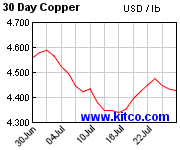
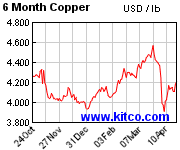
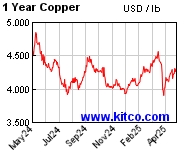
.

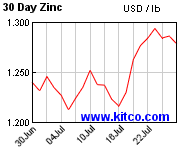
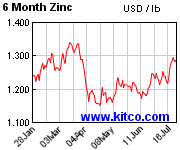
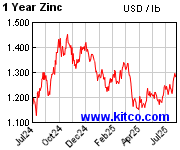
.

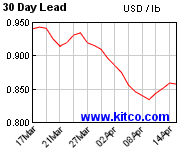
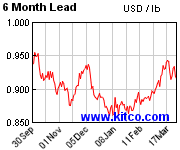
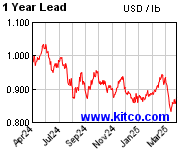
.
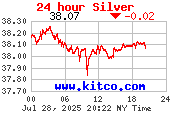
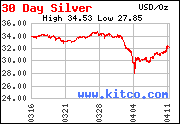
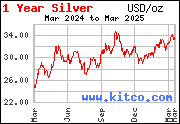
.
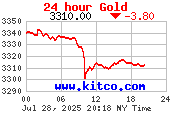
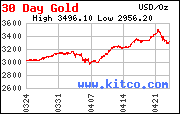
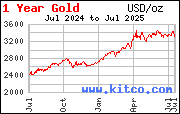
.
.




.




.




.



.



.
- Comodoro
- Mensajes: 980
- Registrado: Jue May 06, 2010 8:24 am
- Ubicación: LIMA
Re: Viernes 04/15/11 CPI, Manufactura en NY
Velasco Alvarado, la inspiracion de Humala y de Hugo Chavez.
GobiernoVéase también: Gobierno Revolucionario de las Fuerzas Armadas
Como Comandante General del Ejército, lideró la Junta Militar que derrocó al presidente Fernando Belaúnde Terry el 3 de octubre de 1968. Asimismo, promovió la expropiación de las compañías petroleras estadounidenses que operaban en el país, llevada a cabo el 9 de octubre de 1968, por lo cual se instauró esta fecha como Día de la Dignidad Nacional. Posteriormente, esta efemérides fue eliminada del calendario cívico del país por haberse instaurado por parte de un gobierno no democrático.
Velasco conformó un gabinete compuesto por ministros militares y civiles, el cual nacionalizó todo el sector petrolero. Impuso fuertes restricciones a la libertad de prensa expropiando y confiscando diversos diarios y televisoras, instauró una reforma agraria con el objetivo de poner fin a la oligarquía terrateniente. Luego, procuró nacionalizar los sectores clave de la economía por medio de medidas proteccionistas e intervencionistas.
Con el fin de movilizar organizadamente a la población y controlar las movilizaciones sociales, creó el Sistema Nacional de Movilización Social (SINAMOS).
En el ámbito internacional, el gobierno de las Fuerzas Armadas promovió una política de no alineación, bajo el lema "ni con el capitalismo ni con el comunismo". En los hechos, la ruptura con los Estados Unidos implicó alianzas con el bloque soviético.
Tras la estatizacion de la actividad pesquera, se creó el Ministerio de Pesquería. Con ello se mejoró la alimentación de la población, puesto que por ejemplo el pescado de mar que nunca había llegado fresco a los andes peruanos, llegaba ahora en carros refrigerados de la empresa pesquera estatal. Para distribuir los alimentos producidos por las cooperativas agrarias creadas por la revolución, se creó el Ministerio de Alimentación, que gestionó convenios para importar alimentos para el país.
En 1972 el gobierno de Velasco decretó una reforma educativa que previó entre otros una educación bilingüe para los indígenas y hablantes de lenguas originarias, que componían casi la mitad de la población. En 1975 se oficializó el quechua como lengua oficial junto al castellano. Sin embargo, tras la caída de Velasco esta ley casi no fue puesta en práctica.
[editar] Golpe de estadoEl 29 de agosto de 1975, el General de División EP Francisco Morales Bermúdez, entonces Presidente del Consejo de Ministros, y quien estaba voceado para suceder en el gobierno a Velasco, lideró un golpe de estado desde la ciudad de Tacna y derrocó a Velasco en una acción que se conoció como el Tacnazo. Para la realización de esta acción, Morales Bermúdez alegó la mala situación económica y la deteriorada salud de Velasco, a quien se le debió amputar la pierna derecha el 10 de marzo de 1973 debido a una gangrena devenida de un aneurisma aórtico abdominal que lo puso al borde de la muerte el 23 de febrero.
[editar] MuerteEn sus últimos años, Velasco vivió una especie de reclusión voluntaria, sin dejar herederos políticos. Dejó de existir en el Hospital Militar de la ciudad de Lima, el sábado 24 de diciembre de 1977 y su sepelio fue multitudinario y terminó convertido en una forma de protesta contra el gobierno de turno. Sus restos reposan en el Cementerio del Ángel de Lima. En 1980, su tumba fue objeto de un atentado dinamitero por Sendero Luminoso, en una de sus primeras acciones en el marco del conflicto armado interno.
Legado
La imagen de Velasco se mantendría como un importante referente del reformismo militar peruano. Algunos de sus principales lugartenientes fundaron el Partido Socialista Revolucionario (PSR), inspirado netamente en el proyecto velasquista. Dos meses después de su conformación sus cabecillas fueron deportados a Panamá y México, permitiéndose su regreso para las elecciones de la Asamblea Constituyente, obteniendo 7% de los votos. PSR fue parte de la Izquierda Unida, que integraba a las diversas organizaciones socialistas peruanas ubicadas políticamente a la izquierda del APRA. En el 2000 la imagen de Velasco fue rescatada por el Movimiento Etnocacerista, liderado por los hermanos Antauro y Ollanta Humala, que planeaba la necesidad de reflotar el proyecto velasquista, que quedo inconcluso. En la campaña electoral del 2006 Ollanta manifesto su admiración por la obra del general. A pesar de que los hermanos Humala tomaron posiciones políticas divergentes, Antauro, preso en la cárcel de Piedras Gordas, sigue siendo referente del etnocacerismo, y Ollanta, lidera el más moderado Partido Nacionalista Peruano (PNP), ambos rescatan la figura de Velasco. Fuera de las fronteras peruanas el dictador peruano también inspiró al comandante venezolano Hugo Chávez, que se ha declarado "velasquista". Siendo cadete Chávez conoció en persona a Velasco y quedó imbuido con la "Revolución Nacionalista Peruana". Incluso, el general le regaló un libro que fue uno de sus textos de cabecera.
GobiernoVéase también: Gobierno Revolucionario de las Fuerzas Armadas
Como Comandante General del Ejército, lideró la Junta Militar que derrocó al presidente Fernando Belaúnde Terry el 3 de octubre de 1968. Asimismo, promovió la expropiación de las compañías petroleras estadounidenses que operaban en el país, llevada a cabo el 9 de octubre de 1968, por lo cual se instauró esta fecha como Día de la Dignidad Nacional. Posteriormente, esta efemérides fue eliminada del calendario cívico del país por haberse instaurado por parte de un gobierno no democrático.
Velasco conformó un gabinete compuesto por ministros militares y civiles, el cual nacionalizó todo el sector petrolero. Impuso fuertes restricciones a la libertad de prensa expropiando y confiscando diversos diarios y televisoras, instauró una reforma agraria con el objetivo de poner fin a la oligarquía terrateniente. Luego, procuró nacionalizar los sectores clave de la economía por medio de medidas proteccionistas e intervencionistas.
Con el fin de movilizar organizadamente a la población y controlar las movilizaciones sociales, creó el Sistema Nacional de Movilización Social (SINAMOS).
En el ámbito internacional, el gobierno de las Fuerzas Armadas promovió una política de no alineación, bajo el lema "ni con el capitalismo ni con el comunismo". En los hechos, la ruptura con los Estados Unidos implicó alianzas con el bloque soviético.
Tras la estatizacion de la actividad pesquera, se creó el Ministerio de Pesquería. Con ello se mejoró la alimentación de la población, puesto que por ejemplo el pescado de mar que nunca había llegado fresco a los andes peruanos, llegaba ahora en carros refrigerados de la empresa pesquera estatal. Para distribuir los alimentos producidos por las cooperativas agrarias creadas por la revolución, se creó el Ministerio de Alimentación, que gestionó convenios para importar alimentos para el país.
En 1972 el gobierno de Velasco decretó una reforma educativa que previó entre otros una educación bilingüe para los indígenas y hablantes de lenguas originarias, que componían casi la mitad de la población. En 1975 se oficializó el quechua como lengua oficial junto al castellano. Sin embargo, tras la caída de Velasco esta ley casi no fue puesta en práctica.
[editar] Golpe de estadoEl 29 de agosto de 1975, el General de División EP Francisco Morales Bermúdez, entonces Presidente del Consejo de Ministros, y quien estaba voceado para suceder en el gobierno a Velasco, lideró un golpe de estado desde la ciudad de Tacna y derrocó a Velasco en una acción que se conoció como el Tacnazo. Para la realización de esta acción, Morales Bermúdez alegó la mala situación económica y la deteriorada salud de Velasco, a quien se le debió amputar la pierna derecha el 10 de marzo de 1973 debido a una gangrena devenida de un aneurisma aórtico abdominal que lo puso al borde de la muerte el 23 de febrero.
[editar] MuerteEn sus últimos años, Velasco vivió una especie de reclusión voluntaria, sin dejar herederos políticos. Dejó de existir en el Hospital Militar de la ciudad de Lima, el sábado 24 de diciembre de 1977 y su sepelio fue multitudinario y terminó convertido en una forma de protesta contra el gobierno de turno. Sus restos reposan en el Cementerio del Ángel de Lima. En 1980, su tumba fue objeto de un atentado dinamitero por Sendero Luminoso, en una de sus primeras acciones en el marco del conflicto armado interno.
Legado
La imagen de Velasco se mantendría como un importante referente del reformismo militar peruano. Algunos de sus principales lugartenientes fundaron el Partido Socialista Revolucionario (PSR), inspirado netamente en el proyecto velasquista. Dos meses después de su conformación sus cabecillas fueron deportados a Panamá y México, permitiéndose su regreso para las elecciones de la Asamblea Constituyente, obteniendo 7% de los votos. PSR fue parte de la Izquierda Unida, que integraba a las diversas organizaciones socialistas peruanas ubicadas políticamente a la izquierda del APRA. En el 2000 la imagen de Velasco fue rescatada por el Movimiento Etnocacerista, liderado por los hermanos Antauro y Ollanta Humala, que planeaba la necesidad de reflotar el proyecto velasquista, que quedo inconcluso. En la campaña electoral del 2006 Ollanta manifesto su admiración por la obra del general. A pesar de que los hermanos Humala tomaron posiciones políticas divergentes, Antauro, preso en la cárcel de Piedras Gordas, sigue siendo referente del etnocacerismo, y Ollanta, lidera el más moderado Partido Nacionalista Peruano (PNP), ambos rescatan la figura de Velasco. Fuera de las fronteras peruanas el dictador peruano también inspiró al comandante venezolano Hugo Chávez, que se ha declarado "velasquista". Siendo cadete Chávez conoció en persona a Velasco y quedó imbuido con la "Revolución Nacionalista Peruana". Incluso, el general le regaló un libro que fue uno de sus textos de cabecera.
- admin
- Site Admin
- Mensajes: 165435
- Registrado: Mié Abr 21, 2010 9:02 pm
¿Quién está conectado?
Usuarios navegando por este Foro: No hay usuarios registrados visitando el Foro y 7 invitados
